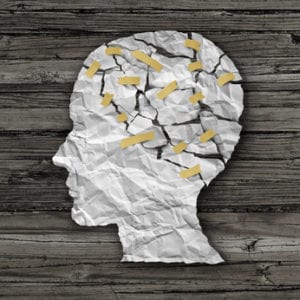While the way the brain functions dictates behavior, certain behavior will also dictate the development of the brain. This puts drug users and those prone to addiction in a delicate situation. Brain development can be dictated by drug abuse, which will then encourage more drug usage and lead the user to full blown addiction.
How exactly does this happen? It’s all due to the very way the brain functions.
The Pleasure Principle that Fuels Addictive Behavior
Pleasure has a distinct neurochemical signature: the release of dopamine in a cluster of nerves that reside beneath the cerebral cortex. This method of dopamine release is so consistently associated with pleasure that this region of the brain is often referred to as the pleasure center of the brain.
This process leads to what is widely labeled as the pleasure principle. Whenever a certain activity provides a release of dopamine in the pleasure center of the brain, the brain interprets this as a reward for this activity and is taught to repeat this behavior. The pleasure principle is necessary for the survival of the human species, as it encourages eating and sexual reproduction.
The Surge of Dopamine and Other Neural Processes
However, the pleasure principle can also lead to drug addiction. This is because all drugs, ranging from mild nicotine to hardcore heroine, cause a surge of dopamine in the pleasure center of the brain. This triggers the internal reward response, indicating to the user that using drugs is a positive thing because of the dopamine release. This prompts the user to continue to use drugs in order to continually trigger the reward center of the brain.
Additionally, the regions of the brain and neural processes that correspond with addiction contain many overlaps with the areas of the brain that directly support reasoning, cognitive functions and learning. Drug use can impact the way that these areas of the brain develop and form bonds between drug usage and environmental stimulation that can fuel drug seeking behaviors.
A Cycle that Leads to Dangerous Addiction
The pleasure principle and the correlation between addiction and cognitive neurological processes both create a situation that leads people to addiction. Below is a brief summation of how this combination leads to a dangerous addiction:
1. The First “High”
An individual tries a substance for the first time, creating a rush of dopamine to the pleasure center of the brain. This feeling is consciously and subconsciously enjoyed. This compels the individual to seek out the substance again at a future date.
2. Continued Usage
Usage of the substance of choice continues. The brain continually feels rewarded for using this substance, so usage continues.
3. Tolerance Builds
Eventually, the individual has developed a tolerance to the substance. The brain has made the substance less pleasurable. This is because the pleasure principle is typically related to actions that require time and effort. Drug usage is a shortcut to this, meaning the brain is flooded with more dopamine than it can handle. Thus, the drug user has developed a tolerance and increases usage.
4. Developing Compulsive Behavior
A little while longer, compulsion takes over. The brain has come to depend on the regular intake of the substance and intense cravings begin to form. These cravings persist even after the rush of dopamine ceases to provide the pleasure that begin the cycle.
5. Physical Addiction
Addiction has fully taken root at the neurological level. Drug usage encouraged the brain to develop in a way that it now seeks out the gratification provided by the drug.
This cycle is played out over time all over the world.
Fortunately, there are several treatments available for those addicted or who are approaching addiction. Seeking help from family and friends is a great first step to finding sobriety.
References:
- Thomas J. Gould, Ph.D., Addiction and Cognition, U.S. National Library of Medicine, December 2010, http://www.ncbi.nlm.nih.gov/pmc/articles/PMC3120118/
- Understanding Addiction: How Addiction Hijacks the Brain, Help Guide, http://www.helpguide.org/harvard/how-addiction-hijacks-the-brain.htm












